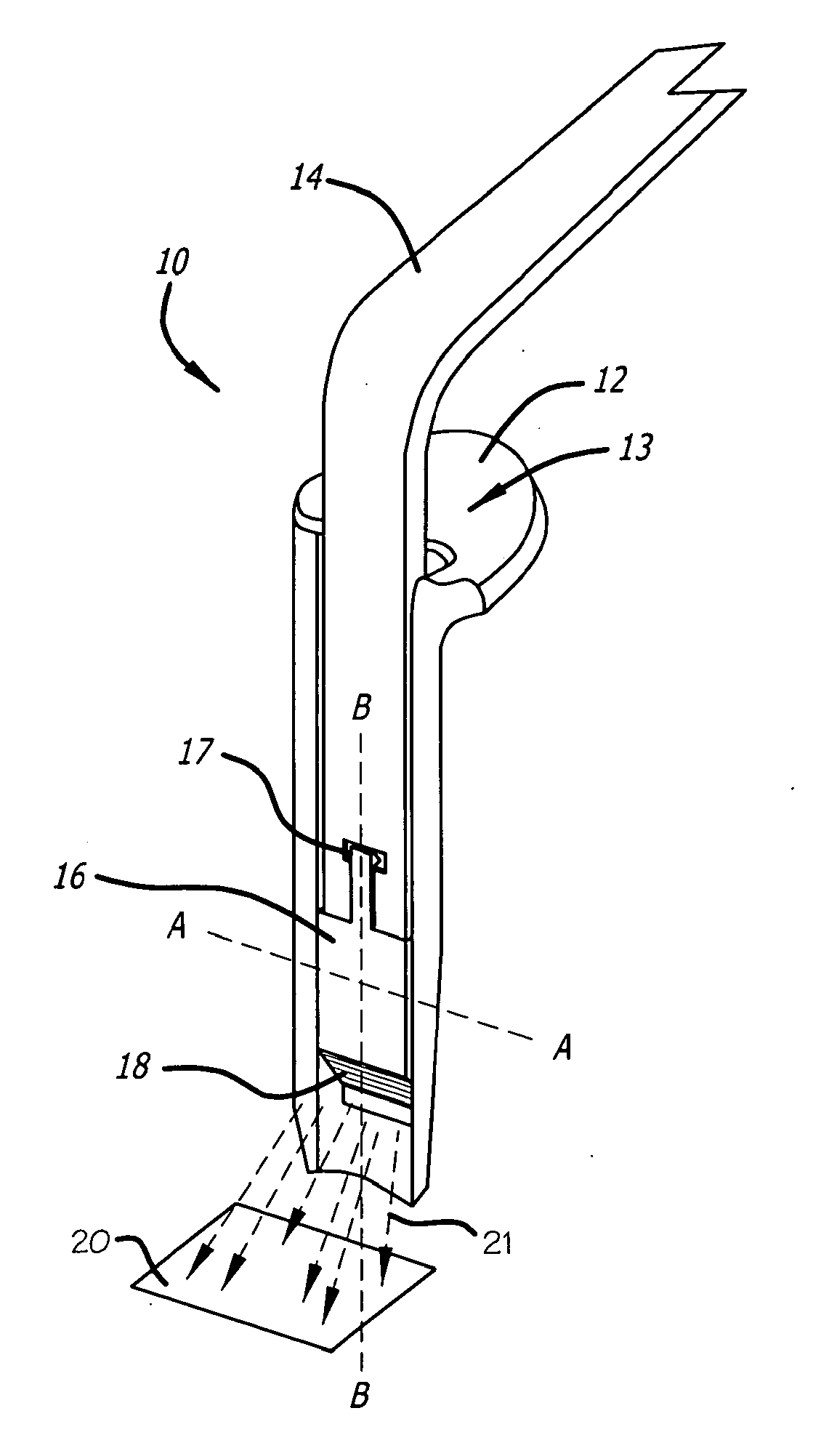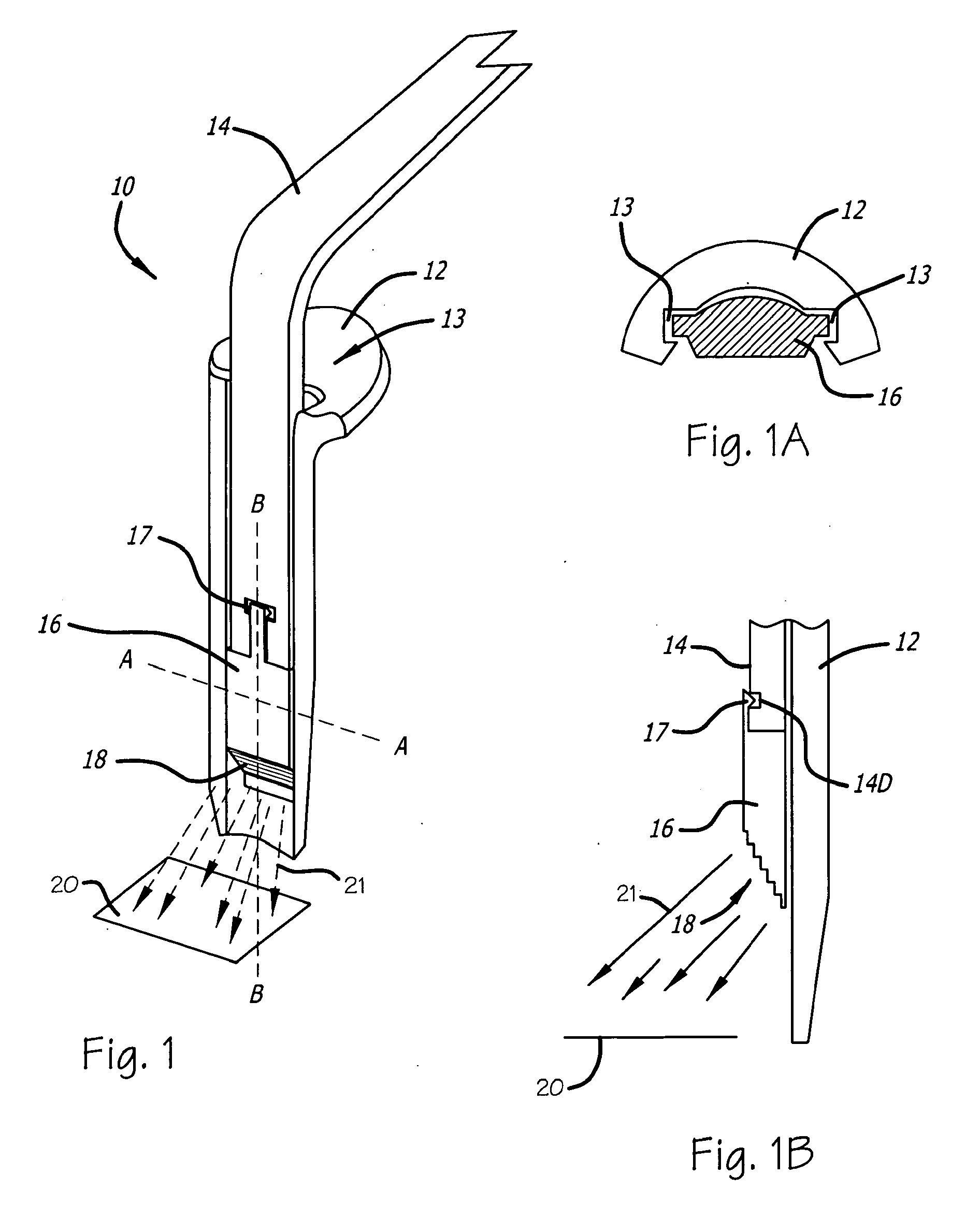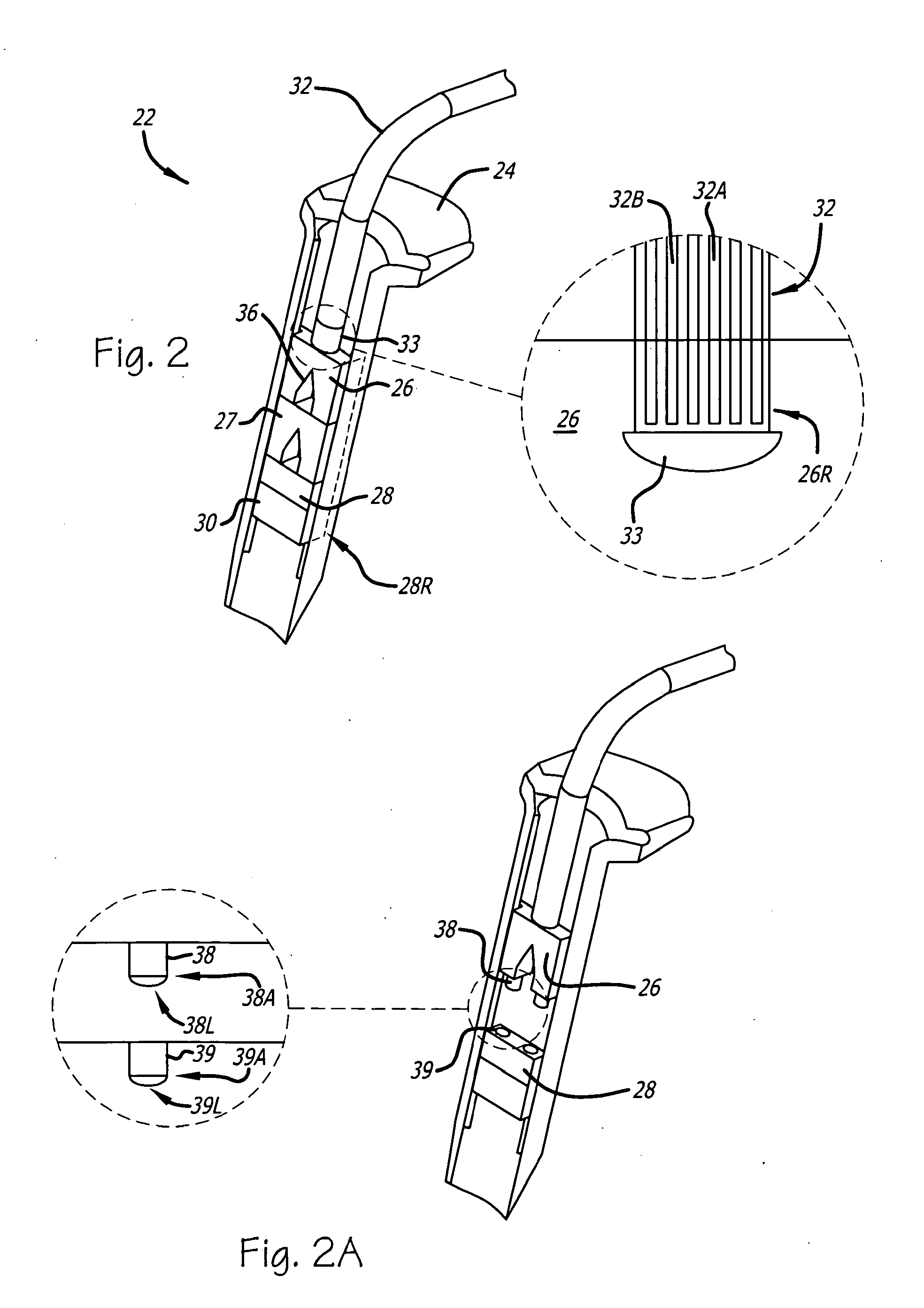Cyclo olefin polymer and copolymer medical devices
a technology of cyclo olefin and medical devices, applied in the field of in vivo surgical illumination, can solve the problems of unfavorable patient treatment, unfavorable patient treatment, and limited use of light sources,
- Summary
- Abstract
- Description
- Claims
- Application Information
AI Technical Summary
Benefits of technology
Problems solved by technology
Method used
Image
Examples
Embodiment Construction
[0079]Cyclic olefin copolymer (COC) and cyclic olefin polymer (COP) are a relatively new class of optical polymers that have glass-like clarity, and therefore are promising materials for optical components used in illuminated medical systems. COC is an amorphous polymer produced by chain copolymerization of cyclic monomers such as 8,9,10-trinorborn-2-ene (norbornene) or 1,2,3,4,4a,5,8,8a-octahydro-1,4:5,8-dimethanonaphthalene (tetracyclododecene) with ethane, TOPAS Advanced Polymer's TOPAS, Mitsui Chemical's APEL, or by ring-opening metathesis polymerization of various cyclic monomers followed by hydrogenation (e.g. Japan Synthetic Rubber's ARTON, Zeon Chemical's Zeonex and Zeonor). These later materials using a single type of monomer are more properly referred to as cyclic olefin polymers (COP).
[0080]COC and COP have transparency similar to glass in its natural form. Therefore they may be used in optical components such as a waveguide, illuminator, or any of the components in the i...
PUM
| Property | Measurement | Unit |
|---|---|---|
| water absorption rate | aaaaa | aaaaa |
| light transmittance | aaaaa | aaaaa |
| refractive index | aaaaa | aaaaa |
Abstract
Description
Claims
Application Information
 Login to View More
Login to View More - R&D
- Intellectual Property
- Life Sciences
- Materials
- Tech Scout
- Unparalleled Data Quality
- Higher Quality Content
- 60% Fewer Hallucinations
Browse by: Latest US Patents, China's latest patents, Technical Efficacy Thesaurus, Application Domain, Technology Topic, Popular Technical Reports.
© 2025 PatSnap. All rights reserved.Legal|Privacy policy|Modern Slavery Act Transparency Statement|Sitemap|About US| Contact US: help@patsnap.com



